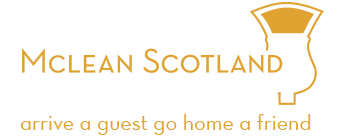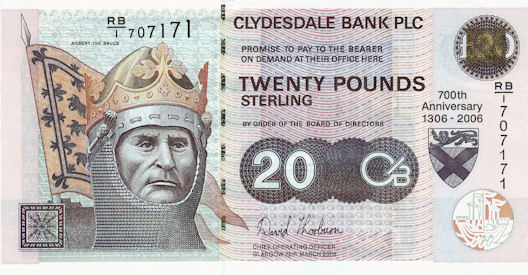The Battle of Glen Trool
was an engagement in the Rebellion, fought in April 1307. Glen Trool is a narrow glen in the southern uplands of Galloway, Scotland. Loch Trool is aligned on an east west axis and is flanked on both sides by steep rising hills, making it ideal for an ambush. Robert Bruce had been involved in the murder of John “the Red” Comyn the previous year 1306. This led to a bitter civil war between the Bruce’s faction and the Comyns and their allies, notably Edward I. After his defeat at the Battle of Methven and the Battle of Dalry in the summer of 1306 , King Robert was little better than a fugitive, disappearing for a number of months. It was the spring 1307 he reappeared, landing in the south-west of Scotland with soldiers recruited from the Western Isles, he came ashore in his own earldom of Carrick. When his brothers Thomas and Alexander landed on the shores of Loch Ryan, they met with disaster at the hands of Dungal MacDougall, the leading Balliol supporter in the area. An early success came with a raid on an English camp on the eastern shores of the Clatteringshaws Loch. It also alerted the enemy to his presence. Aymer de Valence, Bruce’s second cousin and opponent at Methven, received intelligence that he was encamped at the head of Glen Trool. Much of the information we have about the Battle of Glen Trool comes from the rhyming account of John Barbour. Barbour is an important source; but it should also be remembered that The Bruce allows propaganda to walk hand-in-hand with history.
Battle Dispositions The English force was about 3000 men strong. The single source which chronicles this fight, the historical poem “The Bruce” by John Barbour written in 1376, does not give any particulars concerning the number of infantry or cavalry in the English force, but the men that did most of the fighting in the battle were the cavalry. Heavily-armed and –armored knights probably with mounted sergeants comprised the first line of the English force, with the second line mainly composed of infantry. As they outnumbered the Scots by about five to one, the Earl of Pembroke felt he only needed to show up, make one bold charge and disperse the Scots. He made a short speech to his men, saying they would gain rewards and renown for defeating the rebellious Scots. The Bruce had other plans, about 600 men all spearmen, wearing little more than padded or leather armour with steel skull caps and targe or shields, carrying long thrusting spears or pikes, axes or daggers as secondary weapons. There were probably also a few bowmen, some of the men of Ayrshire were renowned archers, also a small body of noble knights, which Bruce ordered to dismount and fight as infantrymen. Robert arrayed his followers in a single deep body. However, prior to the fight, King Robert ordered his men to dig three long, deep trenches running across the plain and anchored on the boggy ground to each side. Several gaps were left in the trenches, allowing some of the English horsemen to charge forward. The trenches were designed to both disrupt the charge of the armoured horse and to funnel them towards the spearmen. King Robert led his men in a battlefield prayer, then ordered his men forward to the first trench line to await the English cavalry who charged forward, fully expecting to sweep the much smaller Scottish force aside. Unfortunately for them, the trenches dug by the Scots disrupted the rhythm of their charge, causing some horses to fall and break their legs or pitch their riders into the trenches or the morass. When the knights did reach the Scottish line, they were bravely met by a bristling line of Scottish spears. Finally, the Scottish spearmen began a deliberate push against the English horsemen, advancing downhill. Seeing the disordered condition of their first line, the English army panicked and fled the field. The fight had lasted only a few hours the Scots had triumphed over the English, inspiring more of their countrymen to join the Bruce’s banner.
Bruce’s Stone, Loch Trool. Bruce’s Stone is a large granite boulder commemorating Bruce’s victory in 1307. It is atop the hill on the north side of Loch Trool. In 1929, on the 600th anniversary of Bruce’s death, it was placed high above the northern shore of Loch Trool, from where, legend has it, he had commanded the ambush that took place on the Steps of Trool on the other side of the loch.
So what do we think? Typically the sassunachs were overly confident as usual, to the point of arrogance. As mentioned above, they just thought by turning up it would win over the hero Scots, er, no right there I’m afraid. Bruce went on to become the true king as we all know, slaughtering the sassunachs at Bannockburn in 1314. They (Saxons) don’t really tell these type of stories in their history lessons, wonder why? MCLEANSCOTLAND are well known as history nuts, with Paul and many driver/guides “well into our history”. We undertake bespoke tours, and The Bruce can be just one of them, some locations to consider; Castle Tioram, where Bruce was possibly sheltered by Christina of Gamoran, The Pass of Brander, where Bruce and James Douglas defeated the MacDougalls – near Oban, Brodick Castle Arran, attacked by Bruce, Glen Trool, site of another Bruce victory against Aymer de Valence as above.
THE OUTLAW KING on Netflix, whatever you think of it, it’s a good film and brutal to the point you wouldnee want wee ones seeing it. Without chaotic battles we wouldn’t see half as many knights in muddy armour. Mackenzie’s take suggested he was lookin for something darker and historical, it could almost be a sequel to Mel Gibson’s effort, but in my view, much better, aye I liked it. No-one paints their face blue or wears tartan 500 years too early.
Paul McLean, Perth.

